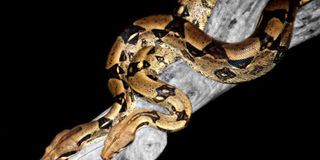Export of snakes to zoos, pet shops abroad banned

Snakes resting on a tree. The government has proscribed the export of snakes to overseas markets. FILE PHOTO
What you need to know:
- The ban, which also includes licences issued for scientific research and venom extraction abroad, commenced at the beginning of this month.
- Dr Patrick Malonza said the trafficking of the endangered species poses a negative impact on the environment.
The government has banned the export of various snake species to zoos and pet shops around the world after receiving reports of animal abuse and sale of the reptiles on the black market for their meat and skin.
The ban, which also includes licences issued for scientific research and venom extraction abroad, commenced at the beginning of this month.
Kenya Wildlife Service spokesman Paul Gathitu said that zoos and pet shops in the UK, Czech Republic, Germany, US, Mexico, Brazil and China are the biggest market for the snakes where they fetch between Sh10,000 ($100) and Sh20,000 ($200), depending on the type of snake.
“We have intercepted several python skins at the airport and made several arrests in the last week. It is much easier to smuggle the young ones as they are not easily detected by machines.
"They are then bred overseas in zoos and pet shops until they are of adult size,” said Mr Gathitu.
According to Dr Patrick Malonza, a senior research scientist in charge of herpetology at the National Museums of Kenya, the trade and trafficking of the endangered species, including the African rock python, poses a negative impact on the environment.
He said the constant smuggling has impacted negatively on the breeding and feeding patterns and growth of snakes, adding that less than 10 years ago a rock python used to produce about 33 snakelets on average, but now it is unusual to produce even half of that.
“Constant illegal smuggling has been our single biggest obstacle. It is even worse than habitat destruction.
"When you smuggle, you also interfere with breeding and their feeding patterns. For instance, the rock python used to grow up to 16 feet; now a fully grown one is, on average, just 10 feet long,” said Dr Malonza.





